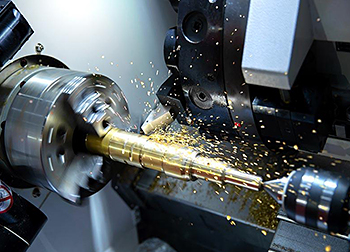The reason for the crawling of the CNC lathe feed system is generally believed to be due to the poor lubrication between the moving parts of the lathe, which leads to the increase of static friction resistance when the lathe workbench moves; When the motor is driven, the workbench cannot move forward, so that the ball screw produces elastic deformation, and the energy of the motor is stored in the deformation; When the motor continues to drive, and the elastic force produced by the stored energy is greater than the static friction force, the machine tool table squirms forward, and moves like this again and again, resulting in the phenomenon of crawling. But in fact, this is only one of the reasons, in fact, this kind of failure may also be caused by the failure of the mechanical feed transmission chain, or the problem of the electrical part of the feed system, or the improper setting of system parameters, or the comprehensive failure of the mechanical part and the electrical part.

Diagnosis and elimination of crawling and vibration faults for the crawling and vibration faults of CNC lathes, can not rush to conclusions, but should be based on the possibility of failure, list the relevant factors that may cause CNC lathe crawling and vibration, and then queue up item by item, one by one to check, analyze, locate and eliminate faults. If there is a problem in any place, the problem will be analyzed to see if it is the main contradiction that causes the failure, until every factor that may cause the failure is found. After the overall consideration, a comprehensive solution to the problem will be proposed, and the problem will be troubleshooting. The specific methods to eliminate the creeping and vibration faults of the feed system of the CNC lathe are as follows:
1. Inspection and elimination of mechanical component failures
2. Analyze the location where the fault occurs
3. Inspection and elimination of feed servo system faults
If the cause of the failure of crawling and vibration of the CNC lathe is in the feed servo system, it is necessary to check the relevant links in the servo system separately. The speed regulator, servo motor or tachogenerator, system interpolation accuracy, system gain, system parameter setting related to position control should be checked, whether the short-circuit rod on the speed control unit is set correctly, whether there is any deviation in the adjustment of the gain potentiometer and whether the circuit of the speed control unit is good, etc., the following points need to be checked and excluded item by item: the detection of pulse encoder or tachogenerator, the detection of the feedback signal of the motor inspection speed measurement motor, and the adjustment of the detection system parameters of the speed regulator, Handling of external interference.